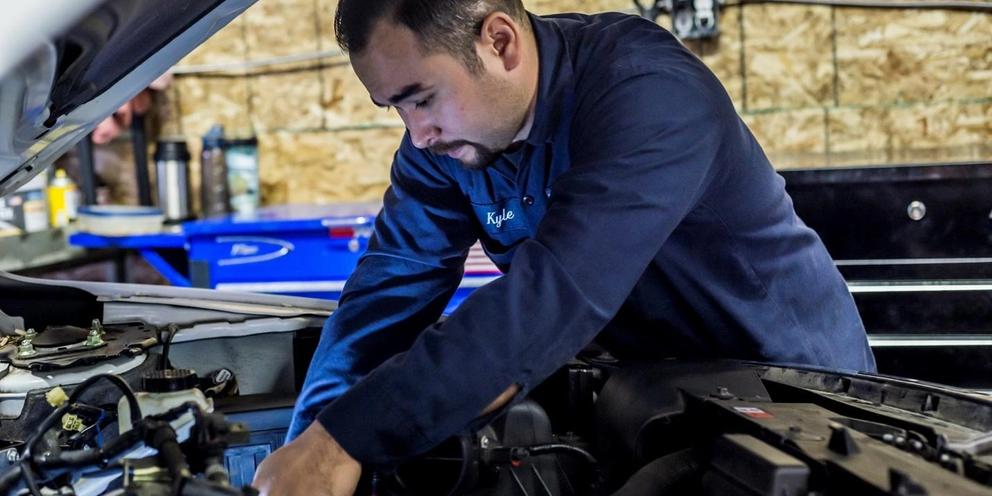
A Beginner's Guide to Car Maintenance: What You Need to Know
Image Credit: Washington County Chamber / flickr
Introduction
The goal of every car owner is to get as much mileage out of their vehicle as possible. To achieve that goal, regular maintenance is essential. Since most of us are not automotive experts, car maintenance can seem overwhelming.
In this beginner's guide to car maintenance, we’ll give you tips on keeping your car in good condition. From oil changes to tire maintenance to brake inspections and more, this guide will cover the basic things you need to know to prevent costly repairs and extend the life of your car.
Importance of Regular Car Maintenance
Your car is a costly investment that you rely on for transportation. That's why regular car maintenance will help ensure it lasts as long as possible. Unfortunately, some components will age quickly, and other systems need regular attention.
This guide will cover important information to keep your car running smoothly.

Benefits of Maintaining Your Car
Regular car maintenance will give you many benefits. First, it helps ensure your safety on the road. A well-maintained car is less likely to break down and leave you stranded. Second, regular maintenance helps improve your car's performance and fuel efficiency.
Here is a list of some of the most common maintenance tasks you need to know:
Oil Changes
A regular task in car maintenance is changing the oil. Your car's oil keeps the engine lubricated to prevent damage that could shorten its life. Depending on your car's model, make, and type of oil, manufacturers recommend changing your oil every 3,000–5,000 miles.
Tire Maintenance
Your car's tires are also critical. Be sure your car's tire pressure is within its recommended range by checking it regularly. Inspect your tires for signs of wear and replace them if needed. Properly inflating your tires can improve your car's handling and fuel efficiency and prevent dangerous blowouts.
Brake Inspections
Your car's brakes are critical for your safety. Regular brake inspections can help find problems early and prevent costly repairs or dangerous driving conditions. If you hear any strange noises when applying the brakes, have them inspected immediately.
Other Maintenance Tasks
In addition to the items above, there are other tasks you should perform to keep your car in good condition. These include replacing your air filter, checking your battery, and inspecting your belts and hoses. Your car's owner's manual will have more specific recommendations for your make and model.
Maintaining the upkeep and care of your car may seem overwhelming, but with a little effort, you can enjoy the benefits of a safe, clean, and long-lasting car.

Image Credit: Nick Youngson CC BY-SA 3.0 Alpha Stock Images
Basic Car Maintenance Terminology
It's essential to understand basic car terminology to stay on top of your vehicle's maintenance and prevent costly repairs. By performing preventive maintenance regularly, following the manufacturer's recommended maintenance schedule, and addressing any unscheduled repairs promptly, you can help extend the life of your car.
The following are some of the most common car maintenance terms:
A. Preventive Maintenance
Preventive maintenance refers to the routine tasks that keep your car in good condition and prevent breakdowns. These tasks include oil changes, tire rotations, and brake inspections.
B. Scheduled Maintenance
Scheduled maintenance refers to specific scheduled tasks recommended by your car manufacturer. This upkeep is outlined in the owner's manual and typically includes oil changes, tire rotations, and air filter replacements. Following the manufacturer's recommended maintenance schedule is crucial to keep your car running smoothly and maintain its warranty.
C. Unscheduled Maintenance
Unscheduled maintenance refers to necessary repairs due to unexpected breakdowns or malfunctions. These repairs may include fixing a flat tire, replacing a dead battery, or changing the wiper blades.
Unscheduled maintenance can be costly and inconvenient. Keeping up with preventive and scheduled maintenance prevents unwanted breakdowns.
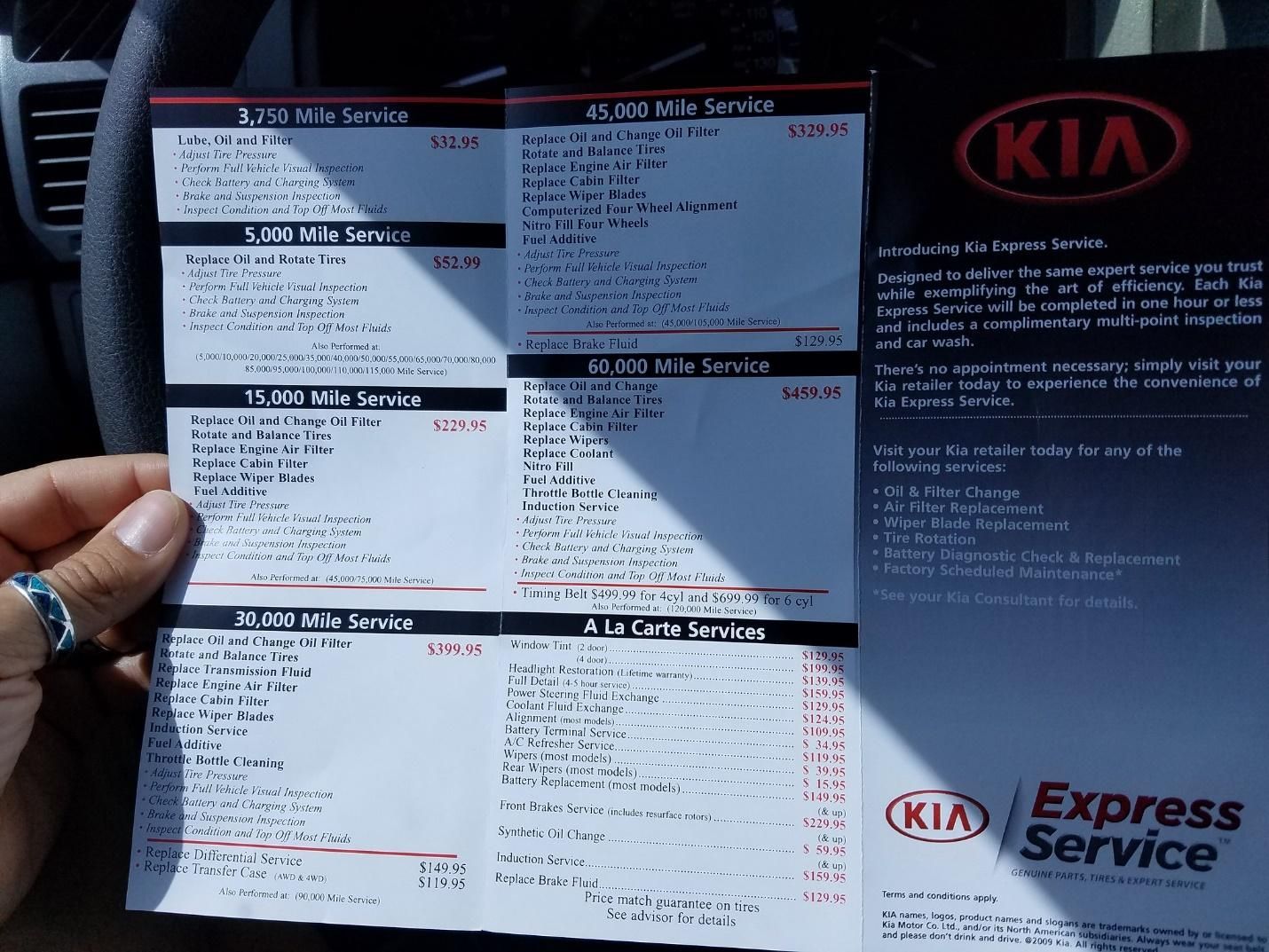
Image Credit: osseous / flickr
Understanding Your Vehicle's Maintenance Schedule
Taking charge of your vehicle's maintenance schedule is an essential and fun part of car ownership. Pay attention to any warning signs your car may show for maintenance outside of the recommended schedule.
A. Manufacturer's Recommendations
Auto manufacturers provide recommended maintenance schedules. The maintenance plan for your car relies on many factors, such as its make and model, engine, and how many miles you typically drive. The recommended maintenance schedule will include oil changes, tire rotations, brake inspections, and air filter replacements.
B. Maintenance Intervals
The maintenance schedule will specify how often you should perform these tasks and what is required at each maintenance interval. For example, the 15,000-mile maintenance interval will likely suggest an oil change, tire rotation, and air filter replacement.
C. Adapting the Schedule to Your Driving Habits
While the manufacturer's recommended maintenance schedule is a good starting point, you can adapt the scheduled maintenance to your driving habits. If you drive in extreme conditions, such as hot, dusty, or sandy environments, you may need to perform some tasks more frequently than the recommended schedule.
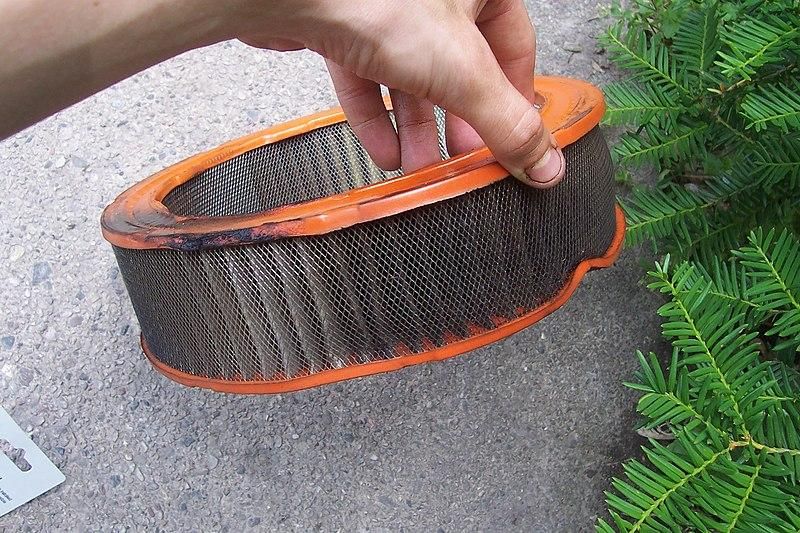
Image Credit: Ahanix1989 / Wikimedia Commons
Essential Fluids and Filters for Car Maintenance
Maintaining your car's essential fluids and filters is critical to keep it running smoothly and prevent costly repairs. To keep your car running at its best, regularly change the engine oil, transmission fluid, coolant, brake fluid, power steering fluid, and air filter. If you're unsure about maintaining these fluids and filters, consult your owner's manual or your regular mechanic.
Here are some of the most important fluids and filters to pay attention to:
A. Engine Oil and Oil Filter
Engine oil is the lifeblood of your car. It lubricates the engine components, reducing friction and preventing damage. Over time, oil breaks down and becomes less effective, so it's crucial to change the oil regularly. Changing the oil filter at the same time is also recommended.
B. Transmission Fluid
Transmission fluid lubricates and cools the transmission components and allows the transmission to shift gears. Like engine oil, it also degrades over time and needs to be changed regularly. Not changing the transmission fluid can cause overheating, which can lead to costly repairs.
C. Coolant
Coolant is the fluid that helps regulate the temperature of the engine. It keeps the engine from overheating in hot weather and freezing in cold weather. It's crucial to check the coolant level regularly and replace it according to the manufacturer's recommended schedule to prevent engine damage.
D. Brake Fluid
Brake fluid transfers force from the brake pedal to the brake components, allowing you to stop the car. Over time, brake fluid can absorb moisture and become less effective, which reduces brake performance. It's important to check the brake fluid regularly and ensure your brakes function as they should. You should have your brake system flushed every 2 years or 3,000 miles.
E. Power Steering Fluid
Power steering fluid helps you turn the steering wheel with ease. Like other fluids, it can become contaminated over time and need replacing. Regularly check the power steering fluid level and replace it according to the manufacturer's recommended schedule.
F. Air Filter
The air filter helps prevent dirt and other debris from entering the engine. A dirty air filter can reduce engine performance and fuel efficiency. To keep your engine healthy, check the air filter regularly and replace it when it becomes dirty.

Image Credit Horace Ko / flickr
Keeping Your Tires in Top Shape
Tires are essential components of your vehicle and provide traction and stability on the road. Here are some tips for keeping your tires rolling smoothly:
A. Tire Pressure
Maintaining the correct tire pressure is crucial to safely operating your vehicle. Overinflated or underinflated tires can lead to poor handling, a drop in fuel efficiency, and tire failure. To determine the correct tire pressure, refer to your owner's manual.
Checking your tire pressure at least once a month and before starting a long trip is recommended. You can use a tire pressure gauge to accurately measure the pressure. If the air pressure is too low, add air until it reaches the recommended level. If it's too high, release some air until you're at the proper pressure.
B. Tire Rotation and Alignment
Tire rotation involves moving the tires from one corner of your car to another to promote even wear. Because they do the turning, the front tires usually wear out faster than the rear tires, so you should rotate them every 5,000 to 7,000 to extend their life. It's best to follow the manufacturer's recommended rotation pattern in your owner's manual.
Tire alignment refers to adjusting the suspension system to ensure the tires are perpendicular to the road and parallel to each other, so your car rolls straight. Proper alignment reduces tire wear and improves handling and fuel efficiency. If you notice uneven tire wear or your car pulls to one side, it's a sign that your tires need alignment.
C. Tire Tread Depth
Tire tread depth refers to the amount of rubber on the tire that contacts the road. It's essential to have adequate tread depth to ensure proper traction and prevent hydroplaning. Tires with tread depths below 2/32 of an inch should be replaced.
To check your tire's tread depth, use a tread depth gauge or do the penny test. The penny test involves inserting a penny into the tread with Lincoln's head facing down. If you can see the top of Lincoln's head, your tread depth is too low and it's time to replace your tires.
D. Inspecting for Tire Damage
Regularly inspecting your tires for damage can help prevent blowouts and other tire-related issues. Check the tires for cracks, punctures, bulges, or other signs of wear. If you notice any damage, have your tires inspected by a professional.
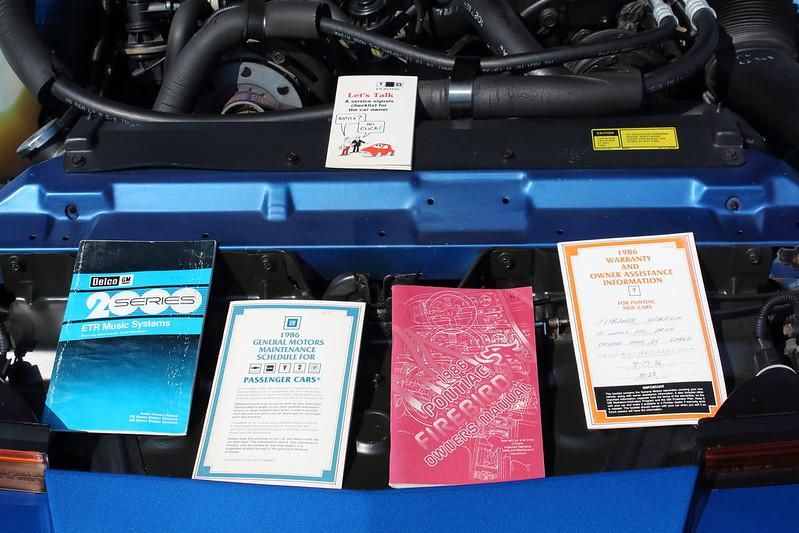
Image Credit: Karolina Grabowska / Pixabay
Battery Maintenance
Your car's battery provides the power to start your engine and operate your vehicle's electrical systems. It's important to keep your battery in good condition for reliable performance.
Maintaining your car's battery is essential to ensure reliable performance and prevent unexpected breakdowns. Regularly inspecting your battery and cleaning the terminals can help prolong its life and keep your vehicle running smoothly.
Here are some tips for keeping your car battery healthy:
A. Regular Battery Inspection
Regularly inspecting your battery is essential to ensure it is functioning correctly. Make sure the battery is securely mounted in place. If you notice any damage or loose connections, have your battery inspected by a professional.
It's also essential to check your battery's voltage regularly. If the voltage drops, it may be that your battery is not holding a charge and needs to be replaced.
B. Cleaning Battery Terminals
Over time, the terminals on your battery can become corroded and affect your battery's performance. To clean your battery terminals, disconnect the negative terminal (black), then the positive terminal (red). Use a wire brush or battery terminal cleaner to remove any corrosion or buildup on the terminals and cables. After cleaning, reconnect the positive terminal (red) first and then the negative terminal (black).
C. Charging and Replacing Your Battery
If your battery voltage is low and your car won’t start, you may need to charge it using a battery charger. You can purchase a battery charger at most auto parts stores, and they come with instructions on using them correctly. When charging your battery, make sure it's in a well-ventilated area to avoid excess fumes. Always follow the manufacturer's instructions carefully.
D. Replacing Your Battery
You might need to replace your battery if it doesn’t hold a charge or if it's more than three years old. You can purchase a replacement battery at most auto parts stores or large chain stores with automotive departments. Car batteries come in a variety of sizes and types, so be sure to get the battery that is right for your car.

Image Credit: NoName_13 / Pixabay
Brake System Maintenance
The brakes are one of the most important safety features in your car, and proper maintenance is critical to ensure they continue stopping your car. Maintaining your car's brake system ensures reliable performance and safe driving. Regularly inspecting your brake pads and rotors, checking the brake fluid, and addressing any issues immediately can help prevent unexpected breakdowns and keep you safe on the road. If you're unsure about any aspect of brake system maintenance, consider handing this task to your mechanic.
Tips for keeping your brake system in top shape:
A. Checking Brake Pads and Rotors
Brake pads and rotors are the main components of your car's braking system. Brake pads are part of the system that contacts the rotors, creating friction and stopping your car. Over time, brake pads wear down and need to be replaced. Have your brake pads inspected regularly, especially if you notice any squeaking or grinding noises when coming to a stop.
Rotors can also wear down over time or become warped, which can cause vibration or a pulsing sensation when you apply the brakes. If you notice any of these symptoms, have your rotors inspected by a professional.
B. Brake Fluid Inspection
Your brake system relies on brake fluid to transmit force from your brake pedal to your brake calipers. Over time, your brake fluid can become contaminated with moisture, which can cause corrosion and affect your brake system's performance.
It's important to have your brake fluid inspected regularly and replaced as needed. Check your owner's manual for recommended brake fluid replacement intervals.
C. Addressing Brake System Issues
If you notice any issues with your brake system, address them promptly. Common signs of brake system issues include:
• Squeaking or grinding noises when you apply the brakes
• A pulsing sensation or vibration when you apply the brakes
• Soft or spongy brake pedal
• Brake warning light on your dashboard
If you notice any of these symptoms, have your brake system inspected by a professional immediately. Ignoring brake system issues can lead to more severe problems and compromise your safety on the road.

Image Credit: wnk1029 / Pixabay
Belts and Hoses
Belts and hoses are essential components of your car's engine that can wear down or become cracked and loose over time. Regularly inspecting your belts for signs of wear, replacing your timing belt as recommended, and checking your hoses for leaks and wear can help keep your car running smoothly.
Tips for keeping your belts and hoses in top shape:
A. Identifying Worn or Damaged Belts
Belts transfer power from the engine to other systems in your car, such as the alternator, power steering, and air conditioning. Over time, belts can wear down or become damaged, leading to reduced performance or even a breakdown.
Inspect your belts regularly, especially if you notice any squeaking, chirping, or grinding noises from under the hood. If you notice any cracks, fraying, or glazing on your belts, they may need replacing.
B. Timing Belt Replacement
The timing belt is a crucial part of your car's engine that connects the camshaft to the crankshaft and allows the valves to open and close. A worn or loose timing belt can cause engine damage and should be replaced according to your manufacturer's recommendations, typically around 60,000 to 100,000 miles.
C. Inspecting and Replacing Hoses
Hoses are another crucial part of your car's engine, carrying coolant and other fluids to various systems. Over time, hoses can become brittle, cracked, or damaged, leading to leaks and reduced performance. Neglecting to replace worn or damaged belts and hoses can lead to unexpected breakdowns and costly repairs.
Inspect your hoses regularly, especially if you notice any leaks or low fluid levels. Hoses may need to be replaced if they show any signs of wear, such as cracks or bulges. When replacing belts and hoses, use high-quality parts and follow your manufacturer's recommendations for replacement intervals.
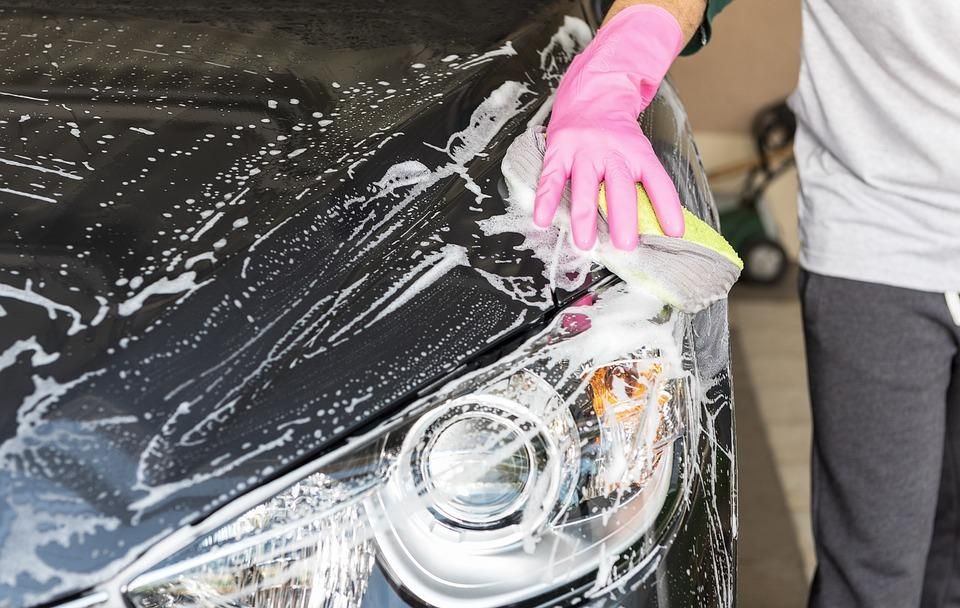
Image Credit: Sasin Tipchai / Pixabay
Exterior and Interior Maintenance
Maintaining your car's exterior and interior is another part of car ownership. Regularly washing and waxing your car and keeping the interior clean and organized can help protect your car and ensure a comfortable driving experience. If you're unsure how to care for your exterior or interior, consult your owner's manual for tips.
A. Washing and Waxing Your Car
Regularly washing and waxing your car helps protect the paint from damage and corrosion caused by dirt, debris, and the elements. Be sure to use mild soap and a soft sponge or cloth to avoid scratching the paint. Rinse thoroughly and dry with a clean towel.
Waxing your car protects against the elements and can help keep it looking shiny and new. Apply a high-quality wax with a soft cloth or applicator, following the instructions on the product you prefer.
B. Checking and Replacing Wiper Blades
Wiper blades are essential for maintaining visibility during rainy or snowy weather. Over time, wiper blades can become worn, cracked, or brittle, reducing their effectiveness and potentially damaging your windshield.
Regularly inspect your wiper blades and replace them if you notice any signs of wear or damage. Generally, wiper blades should be replaced every six months to a year, depending on your climate and driving conditions.
C. Keeping the Interior Clean and Organized
Keeping your car's interior clean and organized makes it more comfortable for you and helps maintain the value of your vehicle. Regularly vacuuming the carpets and upholstery and wiping down surfaces with a damp cloth will keep your interior looking dealer fresh.
Organizing your car's interior can also make it more functional and efficient. Consider using organizers, such as console trays and cargo nets to keep your belongings secure and reduce clutter.

Image Credit: Jens P. Raak / Pixabay
Troubleshooting Common Problems
Every car owner should know how to identify and address common problems with their vehicle. Pay attention to warning lights, unusual noises, and performance issues, and consult your owner's manual or your mechanic for guidance on addressing these issues. By staying on top of car maintenance and addressing problems promptly, you can help ensure safe and reliable driving.
Tips for troubleshooting common issues:
A. Warning Lights and Their Meanings
Modern cars have a variety of warning lights that indicate when something is wrong. For operational safety, you must understand the meaning of the most common lights so you can take the appropriate actions.
Some common warning lights include the check engine light, which indicates something might be wrong with the engine, and the battery light, which indicates a problem with the charging system. Other lights indicate problems with the brake system, tire pressure, or other systems.
If a warning light comes on, consult your owner's manual or a trusted mechanic to determine the cause and necessary action.
B. Unusual Noises and Their Causes
Unusual noises can be a sign of a problem with your car. Squealing or grinding noises when braking may indicate worn brake pads or rotors, while knocking or rattling sounds may indicate a problem with the suspension or steering system.
Whining or buzzing noises may indicate a problem with the transmission or differential, while hissing or popping noises may indicate a problem with the exhaust or fuel system.
If you hear an unusual noise, listen closely to identify the source of the noise and what may be causing it. Consult your owner's manual or your mechanic for guidance.
C. Addressing Performance Issues
If you notice a decrease in performance, such as sluggish acceleration, a knocking sound, or difficulty starting, there may be a problem with your car's engine or other systems.
Common causes of performance issues include dirty or clogged air filters, worn spark plugs or ignition coils, clogged injectors, or problems with the fuel or exhaust system.
If you notice a decrease in performance, consult your owner's manual or your mechanic to determine the cause and necessary action.
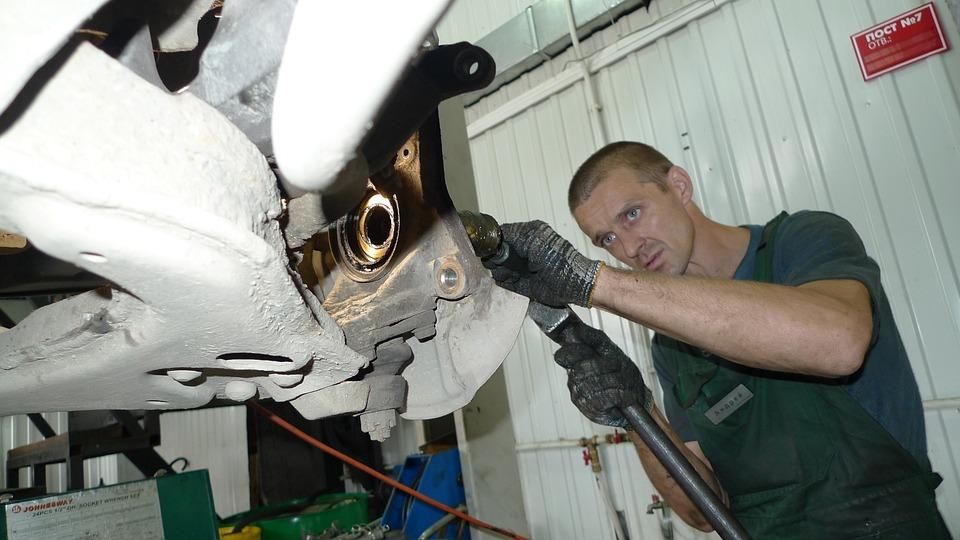
Image Credit: avtoritetkhv / Pixabay
Professional Maintenance
While there are many maintenance tasks you can tackle yourself, there will be times when it's best to seek professional help. Knowing when to tackle maintenance tasks yourself and when to seek professional help, as well as finding a trustworthy mechanic, are important aspects of car maintenance.
Here are some guidelines for knowing when to seek professional maintenance and how to find a trustworthy mechanic:
A. When to Tackle Maintenance Tasks Yourself
Before attempting any maintenance, always consult your owner's manual and follow proper safety precautions. Many routine tasks can be performed by car owners, such as checking and replacing fluids, replacing air filters, and replacing wiper blades.
B. When to Seek Professional Help
No matter how impressive your wrenching skills are, many maintenance tasks are best left to professionals, such as major engine repairs, transmission issues, and brake system repairs. These tasks require specialized tools and expertise and attempting them yourself can be dangerous and costly.
C. Finding a Trustworthy Mechanic
Finding a trustworthy and reliable mechanic may take some time, but it's crucial to find someone you can trust to perform quality work at a fair price. Here are some tips for finding a trustworthy mechanic:
- Ask for recommendations from friends and family members.
- Check online reviews and ratings for local mechanics.
- Look for a mechanic who specializes in your make and model of car.
- Ask for a detailed estimate before agreeing to any work.
- Look for certifications or memberships in professional organizations, such as the National Institute for Automotive Service Excellence (ASE).
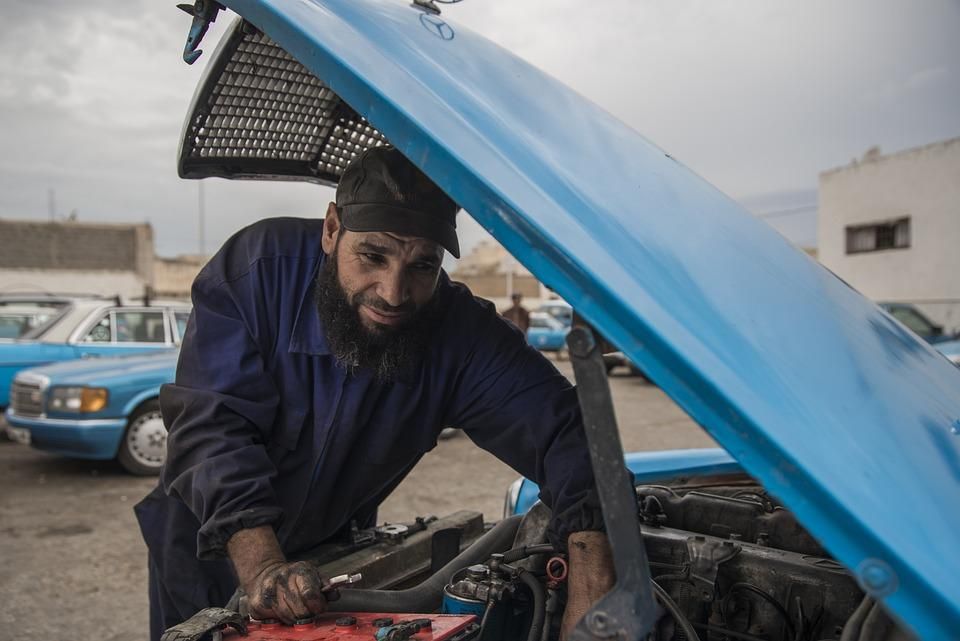
Image Credit: lgellardo / Pixabay
DIY vs. Professional Maintenance
The question of whether to tackle maintenance tasks yourself or seek professional help can be difficult to answer. It all depends on the complexity of the task and your comfort level with car repairs.
Here are some guidelines for deciding when to do it yourself and when to seek professional help:
A. When to Tackle Maintenance Tasks Yourself
Many car maintenance tasks are simple and require few tools, making them an excellent opportunity to save money and learn more about your car.
Before attempting any DIY maintenance tasks, read your car's owner manual and watch some tutorial videos online. Remember to take safety precautions and use the right tools for each specific task you perform.
B. When to Seek Professional Help
If you're unsure whether you can handle a maintenance task yourself, it's always best to seek professional help. A qualified mechanic will have the skills, tools, and experience to perform the repairs safely and effectively.
C. Finding a Trustworthy Mechanic
If you decide to seek professional help, finding a trustworthy mechanic is crucial. Look for a mechanic who has experience and is transparent about their pricing. Ask for recommendations from friends and family or search online for reviews and ratings. Check their qualifications and verify their certifications. If possible, schedule an initial consultation to get a sense of their communication skills and level of professionalism.

Image Credit: Trailers of the East Coast / flickr
Keeping Maintenance Records
Keeping maintenance records is often overlooked by car owners. Documenting all the maintenance and repairs done on your vehicle is vital for many reasons. By documenting all maintenance and repairs, you can stay on top of your vehicle's needs, anticipate future issues, and increase its resale value.
Keeping maintenance records can help you track what needs to be done and schedule future procedures. You can use the information to plan for future maintenance tasks and ensure that everything is addressed on schedule. It can also help you identify reoccurring issues with your car, allowing you to repair them proactively.
Documentation can be beneficial when it comes to reselling your car. Prospective buyers are often interested in a car's maintenance history to gauge its reliability and condition.
To create a maintenance log, keep track of the date, mileage, and details of each maintenance performed, including oil changes, brake inspections, and tire rotations. You can use a notebook, or an app specifically designed for this purpose. Be sure to keep receipts and invoices for any repairs or parts replacements.
Frequently Asked Questions
Q: How often should I change my engine oil?
A: It is recommended to change your engine oil every 3,000 to 7,500 miles, but it will vary depending on your vehicle, your driving habits, and the type of oil you use.
Q: When should I replace my car's air filter?
A: Air filters should be replaced every 15,000 to 30,000 miles, or as recommended by your vehicle's manufacturer.
Q: How can I tell if my tires need to be rotated or aligned?
A: If your tires are wearing unevenly or the vehicle pulls to one side while driving, it may be time for a tire rotation or alignment.
Q: What should I do if my check engine light comes on?
A: If your check engine light comes on, it is recommended to take your vehicle to a mechanic to diagnose the issue.
Q: How do I know when my brakes need servicing?
A: You should have your brakes serviced if you notice any grinding or squealing noises, reduced responsiveness, or a vibrating brake pedal.
Q: How can I improve my car's fuel efficiency through maintenance?
A: Maintaining proper tire pressure, keeping up with regular maintenance, and driving smoothly can improve your car's fuel efficiency.
Q: What are the benefits of following my car's maintenance schedule?
A: Following your car's maintenance schedule can help prevent costly repairs, ensure your vehicle's safety and reliability, and prolong its lifespan.
Conclusion
Regular car maintenance is crucial for keeping your vehicle running smoothly and safely. From checking essential fluids and filters to keeping your tires in top shape, you can perform many tasks to maintain your vehicle's health and safety.
By understanding your car's maintenance schedule, addressing issues promptly, and keeping up with regular maintenance, you can enjoy a reliable and efficient vehicle for many years. Remember, proper car maintenance not only saves you money on costly repairs but also helps to ensure your safety and extend your car's lifespan. By following the tips in this beginner's guide to car maintenance, you can keep your vehicle in top shape for years to come.
Sources:
https://www.repairsmith.com/blog/beginners-guide-to-car-maintenance/
https://www.fixdapp.com/blog/car-care-basics-10-car-maintenance-tips-for-beginners/
https://www.kbb.com/car-advice/maintenance-guide/
https://www.mavis.com/learning-center/top-10-tips-keeping-car-top-shape/
https://www.cars.com/auto-repair/glossary/
https://www.themanual.com/auto/car-fluids-you-should-be-routinely-checking/
https://www.sstire.com/tracy/understanding-the-importance-of-brake-maintenance-2/
https://www.drive-safely.net/14-car-maintenance-tips-to-keep-your-car-in-top-shape/
https://www.bridgestonetire.com/learn/maintenance/ultimate-car-maintenance-checklist/
https://extramile.thehartford.com/auto/tips/finding-a-mechanic/
Updated